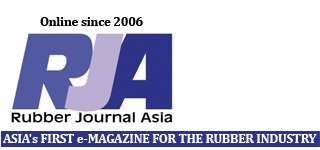THE weak global economy has driven down prices for everything from copper to coal, and now the cartel that controls most of the world’s production of rubber, one of the hardest-hit commodities, is fighting back.
The three Southeast Asian countries that control 70% of the world’s supply of natural rubber said Thursday they would withhold supply now and keep supply tight by burning older rubber trees, hoping to boost prices, which have fallen 60% since their February 2011 peak.
The move by the Bangkok-based International Tripartite Rubber Council, which represents Thailand, Indonesia and Malaysia and is the OPEC of the rubber market, rippled through markets. At one point on Friday, benchmark rubber futures at the Tokyo Commodity Exchange were up 9% from a nearly three-year low on Tuesday before settling at ¥221 ($2.78) a kilogramme, 7% above the Tuesday low.
Higher rubber prices would hit tyre makers, the largest consumers of natural rubber, as well as makers of rubber gloves, shoes, condoms and toy balloons.
But the Rubber Council faces challenges to its effort to boost prices.
“It’s something like OPEC. There’s always cheating somewhere,” says Alvin Tai, plantations analyst for OSK Investment Bank in Kuala Lumpur.
Adding to the challenge, the world’s fourth-biggest rubber exporter, Vietnam, isn’t part of the club, despite recruiting efforts by the other three.
Users of rubber are taking steps to counter higher prices. Rubber latex makes up 60% of the cost of medical gloves, according to Top Glove Corp., 7113.KU -2.04% the world’s largest exporter of rubber gloves.
A spokeswoman for the Malaysian company said in an email that, in the short term, Top Glove will make more gloves from synthetic materials. In the long term, the company will grow its own rubber. Top Glove recently bought an Indonesian company with 30,000 hectares of plantation land. The company also said it is able to pass 70% to 80% of rubber-price increases to customers.
“Producers should allow the market forces, such as demand and supply to determine the rubber price,” a Top Glove spokeswoman said in a written statement.
Another challenge for the producers is the potential harm to politically important constituencies such as plantation owners and rubber tappers from holding back on what would be 450,000 tonnes of rubber, or 5% of global exports.
The prices of natural rubber hit a record high of ¥528 a kilogramme in February 2011 and later fell along with commodities such as oil, down 16% from its 2011 peak, and copper, down 26%, on fears that global manufacturing was stalling. In fact, big rubber users such as heavy-equipment manufacturers have been reeling from the slowdown in construction activity in China and Brazil.
Natural rubber is integral in certain applications such as mining equipment and airplane tyres and can’t always be substituted with synthetic rubber.
Rubber trees grow only in the tropics where rubber tappers collect the milky sap, known as latex, much like sap used to make pancake syrup is taken from a maple tree. Incisions in the tree’s bark cause sap to drip into half coconut shells or metal cups strung on the side of the tree trunks.
Government representatives from the rubber trio said in a statement Thursday that the price drop occurred “despite the fact that demand for natural rubber remains strong, with low stock levels.”
China, the world’s largest consumer of rubber, increased imports of natural rubber by 16% to 1.2 million tonnes this year through July from a year earlier, according to trade figures compiled by data provider CEIC. While the volume of rubber shipped into China has increased, the value of China’s rubber imports has plummeted 16% to $551 million. In other words, China is buying more rubber, but paying a lot less for it, crimping profits for the rubber makers.
The rubber market is tiny compared with other commodities, with 10 million to 11 million tonnes produced a year, and the price increase shouldn’t have broad economic impact.
The fall in rubber prices helped profit margins for tyre giants such as Japan’s Bridgestone 5108.TO -2.63% and South Korea’s Kumho Tire. Bridgestone, the world’s biggest tyre maker by volume, posted a 45% on-year rise in second-quarter net profit thanks in part to lower raw material costs.
A Bridgestone spokesman said the company “certainly will see impact,” from the cartel’s production cuts but couldn’t quantify how much of an impact.
A Kumho Tire spokesman said the company isn’t implementing special measures in response to the cut in rubber exports, but noted Kumho is constantly seeking to diversify its rubber sources. (Source: Wall Street Journal)
